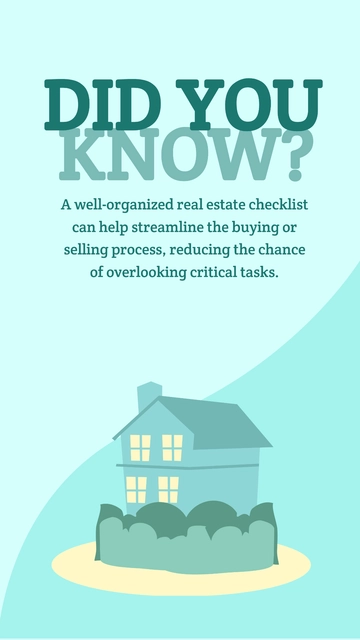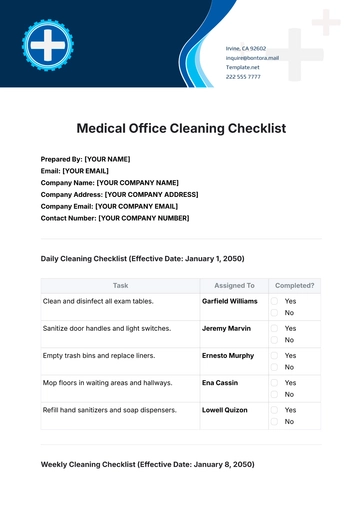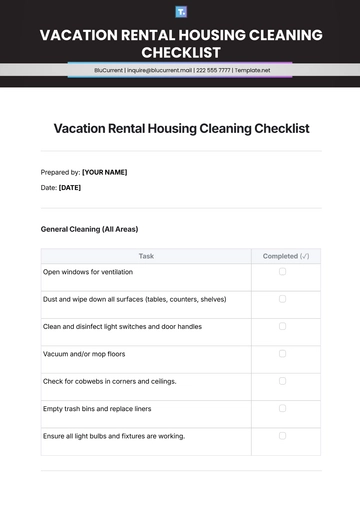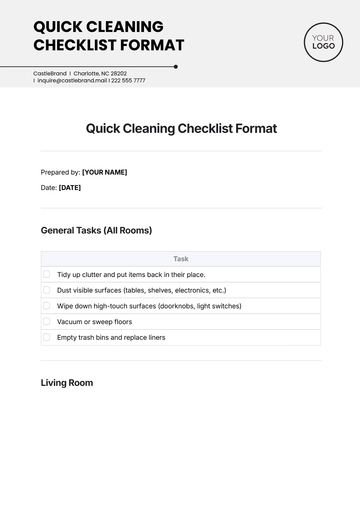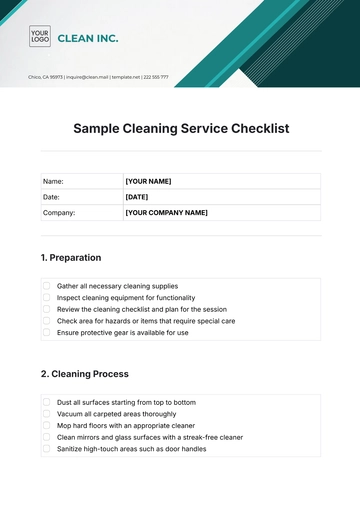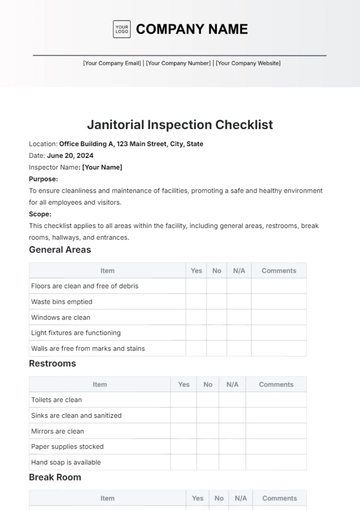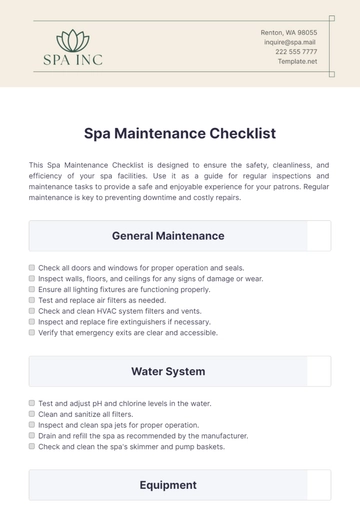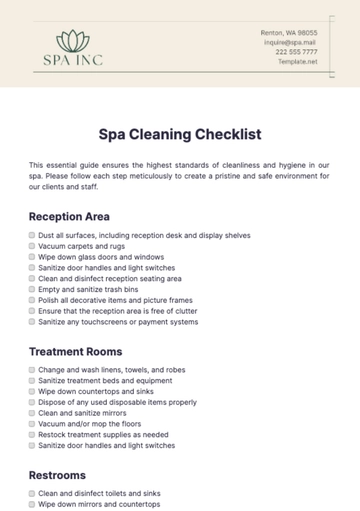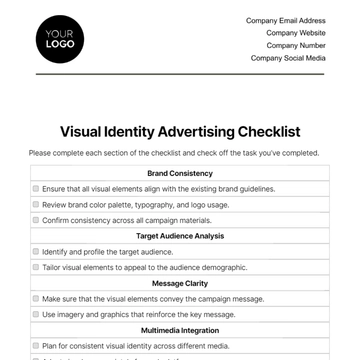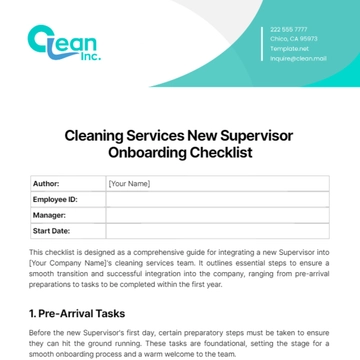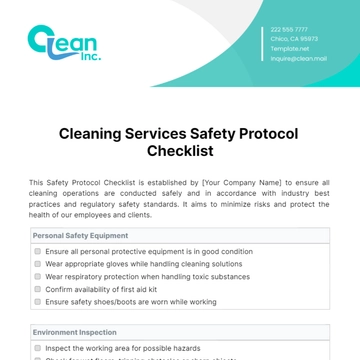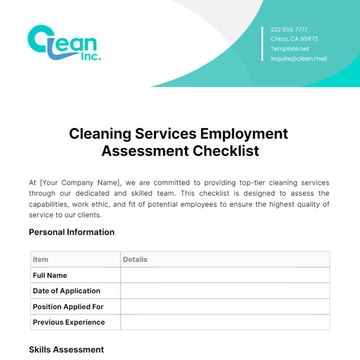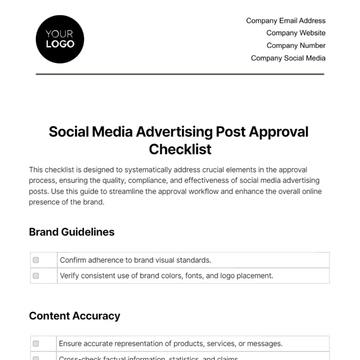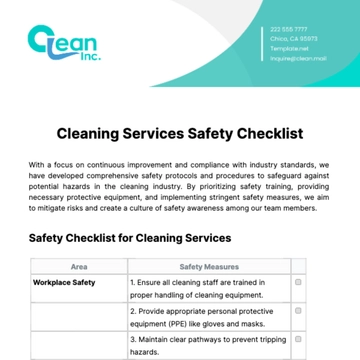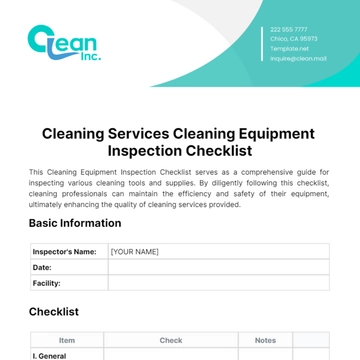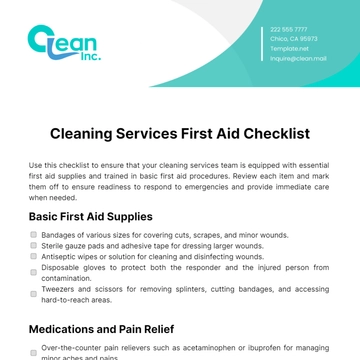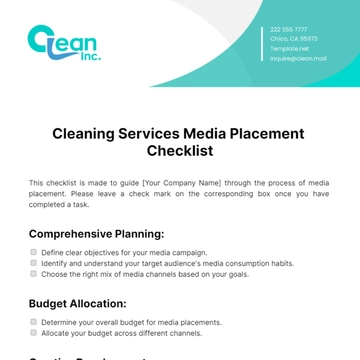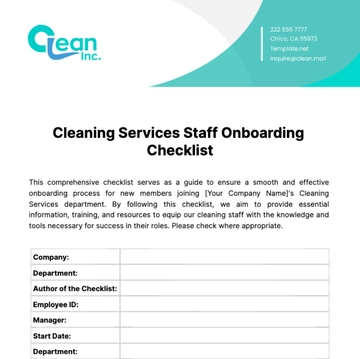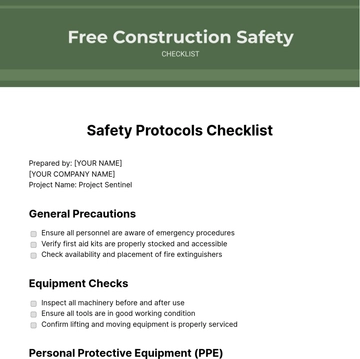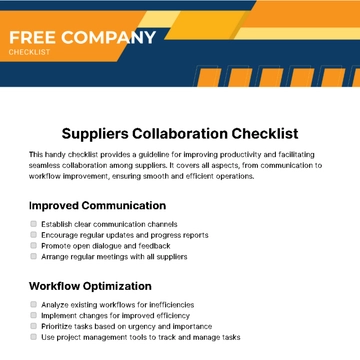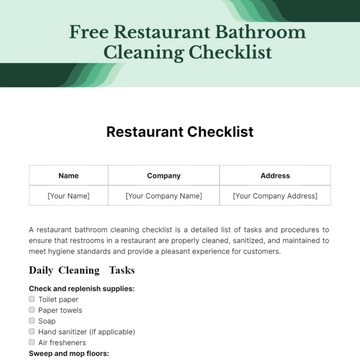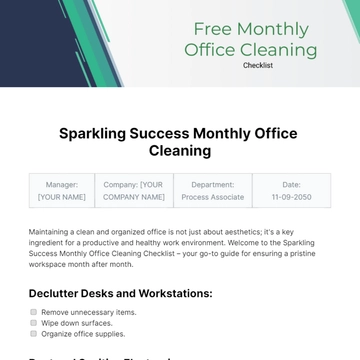Free Cleaning Services First Aid Checklist
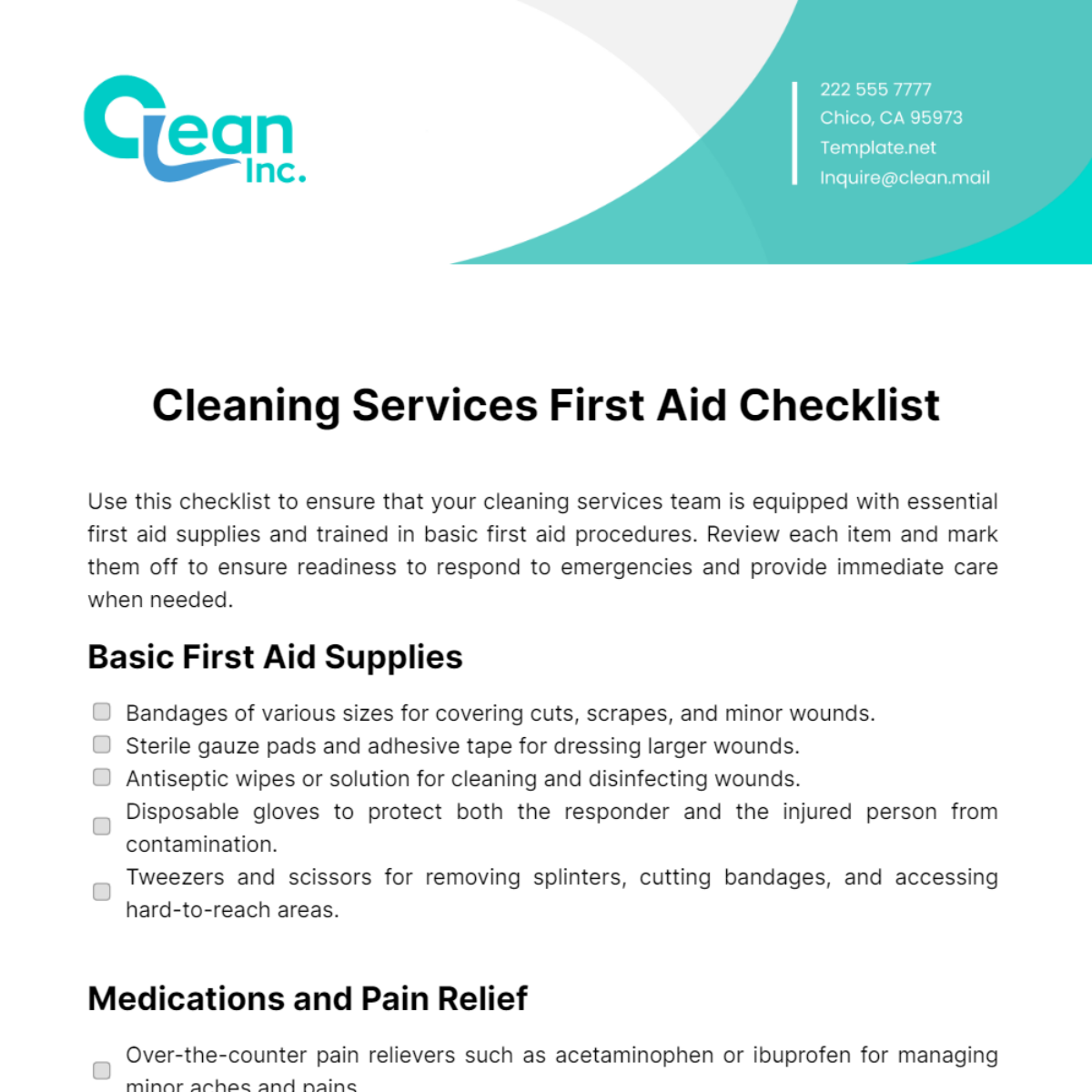
Use this checklist to ensure that your cleaning services team is equipped with essential first aid supplies and trained in basic first aid procedures. Review each item and mark them off to ensure readiness to respond to emergencies and provide immediate care when needed.
Basic First Aid Supplies
Bandages of various sizes for covering cuts, scrapes, and minor wounds.
Sterile gauze pads and adhesive tape for dressing larger wounds.
Antiseptic wipes or solution for cleaning and disinfecting wounds.
Disposable gloves to protect both the responder and the injured person from contamination.
Tweezers and scissors for removing splinters, cutting bandages, and accessing hard-to-reach areas.
Medications and Pain Relief
Over-the-counter pain relievers such as acetaminophen or ibuprofen for managing minor aches and pains.
Antihistamines for treating allergic reactions and insect bites.
Antacids or digestive medications for addressing stomach upset or indigestion.
Topical creams or ointments for soothing insect bites, rashes, or minor burns.
Eye drops or saline solution for flushing out foreign objects from the eyes.
Injury and Illness Management
Cold packs or instant ice packs for reducing swelling and inflammation caused by sprains, strains, or bruises.
Heat packs or heating pads for providing warmth and comfort to individuals experiencing muscle cramps or stiffness.
Thermometer for monitoring body temperature and identifying fever or hypothermia.
CPR mask or barrier device for performing cardiopulmonary resuscitation (CPR) safely.
Blanket or foil emergency blanket for providing warmth to individuals suffering from shock or exposure.
First Aid Equipment and Tools
First aid kit or bag for storing and organizing supplies in a portable and accessible manner.
Resuscitation equipment such as an automated external defibrillator (AED) for responding to cardiac emergencies.
Tourniquet for controlling severe bleeding in emergency situations.
Splints or immobilization devices for stabilizing fractures or dislocations.
Flashlight or headlamp for illuminating dark areas or conducting assessments in low-light conditions.
Documentation and Reporting
Accident report forms for documenting injuries, incidents, or near misses.
Contact information for emergency medical services (EMS) and local healthcare facilities.
Employee emergency contact information for notifying family members or next of kin in case of emergency.
Logbook or recordkeeping system for tracking first aid usage, restocking supplies, and documenting training.
Workplace safety policies and procedures outlining the company's approach to first aid and emergency response.
Prepared by:
[Your Name]
[Your Email]
- 100% Customizable, free editor
- Access 1 Million+ Templates, photo’s & graphics
- Download or share as a template
- Click and replace photos, graphics, text, backgrounds
- Resize, crop, AI write & more
- Access advanced editor
Be prepared for any health emergencies with this adaptable Cleaning Services First Aid Checklist Template! This tool by Template.net, is editable and customizable, allowing you to create a comprehensive first aid checklist. The editing process is simplified with our AI Editor Tool, making it easy to ensure cleaning staff's safety!
You may also like
- Cleaning Checklist
- Daily Checklist
- Travel Checklist
- Self Care Checklist
- Risk Assessment Checklist
- Onboarding Checklist
- Quality Checklist
- Compliance Checklist
- Audit Checklist
- Registry Checklist
- HR Checklist
- Restaurant Checklist
- Checklist Layout
- Creative Checklist
- Sales Checklist
- Construction Checklist
- Task Checklist
- Professional Checklist
- Hotel Checklist
- Employee Checklist
- Moving Checklist
- Marketing Checklist
- Accounting Checklist
- Camping Checklist
- Packing Checklist
- Real Estate Checklist
- Cleaning Checklist Service
- New Employee Checklist
- Food Checklist
- Home Inspection Checklist
- Advertising Checklist
- Event Checklist
- SEO Checklist
- Assessment Checklist
- Inspection Checklist
- Baby Registry Checklist
- Induction Checklist
- Employee Training Checklist
- Medical Checklist
- Safety Checklist
- Site Checklist
- Job Checklist
- Service Checklist
- Nanny Checklist
- Building Checklist
- Work Checklist
- Office Checklist
- Training Checklist
- Website Checklist
- IT and Software Checklist
- Performance Checklist
- Project Checklist
- Startup Checklist
- Education Checklist
- Home Checklist
- School Checklist
- Maintenance Checklist
- Planning Checklist
- Manager Checklist
- Wedding Checklist
- Vehicle Checklist
- Travel Agency Checklist
- Vehicle Inspection Checklist
- Interior Design Checklist
- Backpacking Checklist
- Business Checklist
- Legal Checklist
- Nursing Home Checklist
- Weekly Checklist
- Recruitment Checklist
- Salon Checklist
- Baby Checklist
- Equipment Checklist
- Trade Show Checklist
- Party Checklist
- Hospital Bag Checklist
- Evaluation Checklist
- Agency Checklist
- First Apartment Checklist
- Hiring Checklist
- Opening Checklist
- Small Business Checklist
- Rental Checklist
- College Dorm Checklist
- New Puppy Checklist
- University Checklist
- Building Maintenance Checklist
- Work From Home Checklist
- Student Checklist
- Application Checklist
